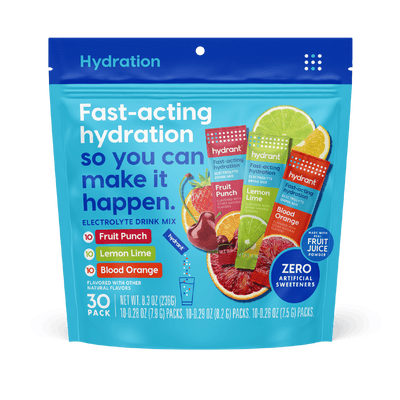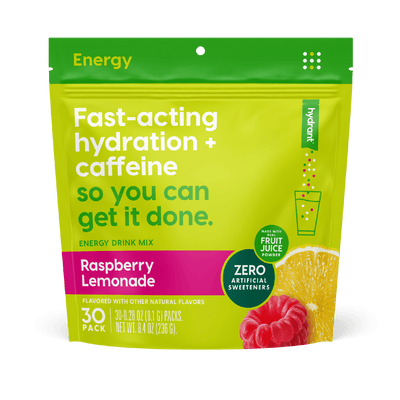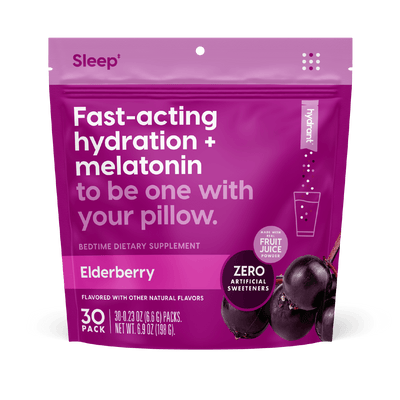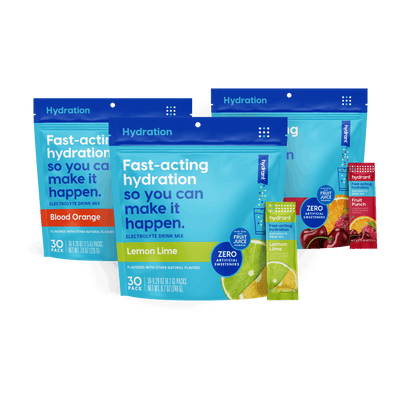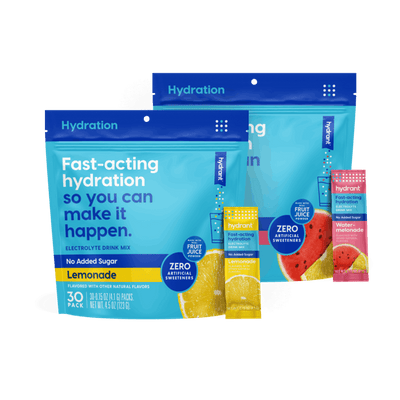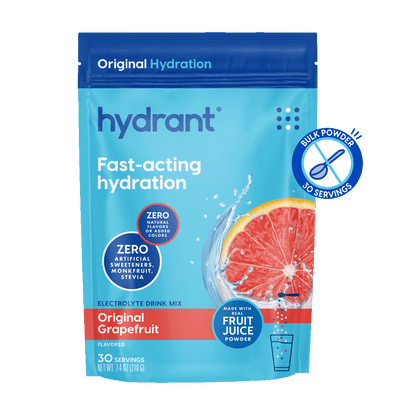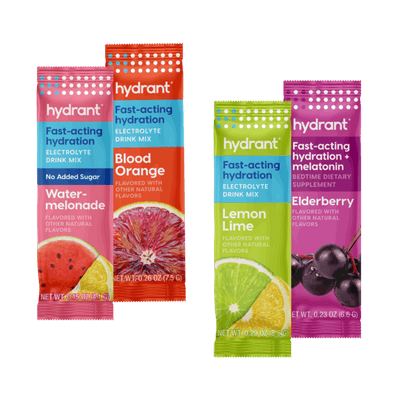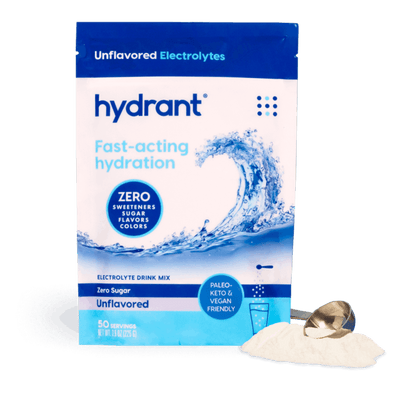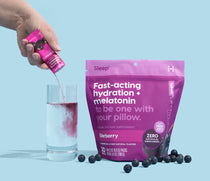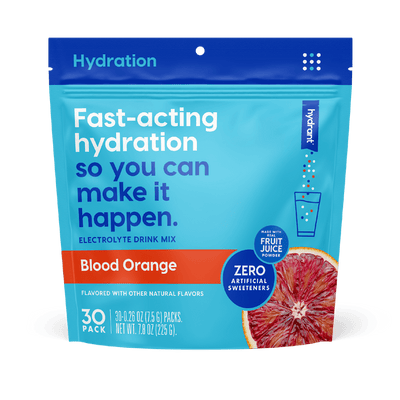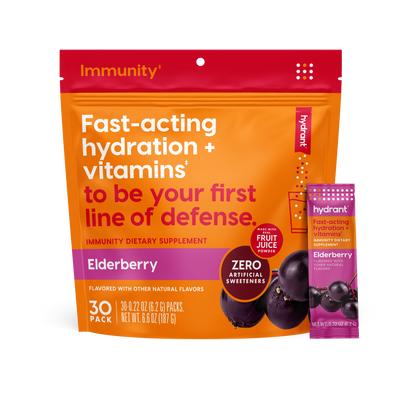It's easy to see why gardeners love what they do.
Growing flowers, food, and other plants present plenty of satisfaction and is an excellent source of physical exercise. But there's one topic that people can overlook when it comes to gardening: hydration. Maintaining proper hydration allows gardeners to spend more time doing what they love efficiently.
When Spring or Summer arrives, garden enthusiasts are always ready to put on their gloves and get to work. Working long days in a sun-drenched garden is a joyful activity, but is frequently physically demanding and can easily lead to dehydration.
Below are some of the ways that dehydration can come into play when spending time in the garden.

How Does Gardening Lead to Dehydration?
Sun exposure is a prime catalyst for garden dehydration, especially during those warm spring and summer months. During hot weather, we might go outside for a walk, run errands, or spend time strolling through the park. Gardeners, on the other hand, often work prolonged periods under the sun.
The CDC defines gardening as a "moderate-intensity exercise." The CDC's label makes perfect sense since people who garden often participate in laborious activities that include:
- Working in a bent position
- Carrying tools
- Digging
- Pulling weeds
- And much more
If a gardener doesn't hydrate properly before working or skips necessary breaks to hydrate, dehydration can easily lead to heat exhaustion. You might be wondering why a garden enthusiast would skip a break to hydrate. Here are a couple of factors:
People who garden love what they do, so it's easy for garden enthusiasts to get involved with their activities on a deep enough level to the point where they don't want to stop—even if their body needs a break. When working outside, gardeners often get dirty, so coming inside and rehydrating for a quick break can be less appealing than the prospect of finishing work, cleaning up, and then taking that time to rehydrate.
If you garden and end up getting sick from dehydration or heat exhaustion, you can end up on the sideline, unable to perform the activities you love most. Let's dive into the ways you can effectively combat the dehydration that can occur during gardening.
How Do I Fight Dehydration While Gardening?
Waiting to take hydration breaks during and after gardening is a mistake that is easy to make. Drinking plenty of proper fluids before you go outside to the garden is essential. It's essential to pay attention to what kinds of liquids you're consuming when attempting to maintain hydration as there are certain drinks one should avoid.
Here is a list of drinks that tend to dehydrate the body:
- Coffee
- Tea
- Alcoholic beverages
There's nothing wrong with having that morning cup of tea or coffee before you enjoy gardening, be sure to balance out these types of drinks with liquids that foster hydration. We can help gardeners get ahead of dehydration with our electrolyte-rich drink mix scientifically designed to hydrate you fast and keep you hydrated.

How Will Hydrant Help Me Stay Hydrated?
You might be wondering why Hydrant is more useful for gardening than your typical glass of water. Water alone doesn't hydrate a person as efficiently compared to drinks such as Hydrant that contain a precise balance of electrolytes and a small amount of sugar.
Isn't the Above Mix the Same as What Traditional Sports Drinks Provide?
What separates Hydrant from traditional sports drinks is that our powder mix contains less sugar (on an ounce by ounce basis) and up to three times the electrolytes. The result is a rapidly hydrating mix that is complimented by a light flavor. Made with real fruit juice powder, Hydrant skips the synthetic colors and artificial sweeteners that many sports drinks contain.
Why does Hydrant contain any sugar at all?
The low amount of sugar that Hydrant contains is to help speed up the absorption process of electrolytes and water in the body. Sugar jumpstarts the sodium-glucose co-transport mechanism of your body, acts like a molecular pump in your body, helping your cells quickly take in the water and electrolytes.
How Does Science Inform Hydrant's Products?
After careful scientific formulation, our products pull on three levers necessary for rapid hydration: proper electrolyte balance, presence of sugar, and low osmolality. Rapid absorption is a considerable asset for gardeners. Whether you're eager to get outside or minimize the time you spend taking breaks, you can trust Hydrant to quickly achieve proper hydration.
Hydrant contains more electrolytes per ounce than traditional sports drinks, but what's equally as significant is that Hydrant contains more potassium than most sports drinks.
Low osmolality indicates that there are fewer particles per unit volume in hydrant liquid. The result of low osmolality is water moving down the body's osmotic gradient more quickly—an essential element of rapid absorption. The osmotic gradient is pressure from water molecules that leads to water moving to low water potential areas.
There's no argument that water is excellent for hydration when gardening, but when you need rapid hydration with a hint of flavor, Hydrant is a superb solution.
Here are some other helpful tips for maintaining hydration during gardening.

Additional Ways to Stay Hydrated When Gardening
Earlier, we touched on how taking a break from gardening to hydrate can be frustrating, especially when you're in the zone with your work or too dirty to go inside. Bringing a water bottle outside is a great way to minimize the time you spend taking breaks to maintain hydration.
Naturally, working for long periods outside in the heat can lead to high sweat levels. Feeling sweaty and uncomfortable can exacerbate feelings of fatigue and dehydration, so consider wearing some moisture-wicking clothing next time you're out in the garden.
A sign of severe heat exhaustion is having a fever over 103 degrees. Bringing a thermometer to the garden can be a useful tool to monitor a person's temperature if they're working prolonged periods in the heat.
Seniors are a specific group that can be more dramatically affected by dehydration when gardening. Below are some tips for seniors to maintain proper hydration during gardening activities.
How Can I Garden Safely as a Senior?
Taking regular breaks either indoors or in the shade is vital. Working for lengthy periods in the sun results in sweat, ergo, water loss. Gardening in the morning hours is easier on a senior's body as the morning light rays are less intense than afternoon sunshine. Senior garden enthusiasts should drink proper fluids regularly, even if they don't feel thirsty. Thirst levels aren't always an appropriate indicator of how hydrated or dehydrated a person is. Sunhats, sunscreen, and sunglasses are a few easy ways to reduce strain and fatigue from sunlight when gardening.
Stay Hydrated with Hydrant
Maintaining proper hydration is well worth it when gardening. Through staying hydrated, you'll be able to garden longer, and more efficiently.
Common signs of dehydration include:
- Dry mouth
- Extreme thirst
- Confusion
- Dizziness
- Headaches
- Fatigue
- Muscle cramps
An essential component of staying hydrated is evaluating how much you're exposing yourself to outdoor elements such as sunlight. As a gardener, you can help combat the natural indicators of dehydration through the use of Hydrant. You'll have the choice of selecting the Hydrant Rapid Hydration Mix or the Caffeinated Hydration Mix for an extra boost. You need water just as much as your plants!
Consider complimenting a Hydrant mix purchase with a water bottle to take outside with you to the garden, and a tote bag for more convenient transport.
